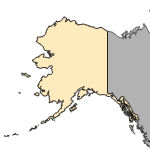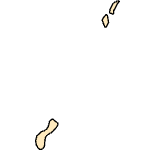Lepidomeda mollispinis mollispinis
(Virgin Spinedace)
Fishes
Native Transplant |
|
Common name: Virgin Spinedace
Synonyms and Other Names: Big Spring spinedace, Virgin River spinedace, Colorado River spinedace
Taxonomy: available through
www.itis.gov
Identification: La Rivers (1962); Page and Burr (1991). Two subspecies: L. m. pratensis, Big Spring spinedace, and L. m. mollispinis, Virgin River spinedace (U.S. Fish and Wildlife Service 1993d). Maximum size: 15 cm.
Native Range: L. m. pratensis: Meadow Valley Wash and Panaca Spring, Lincoln County, Nevada (U.S. Fish and Wildlife Service 1993d). L. m. mollispinis: Virgin River system, Utah, Nevada, and Arizona (Page and Burr 1991).



|

Alaska |

Hawaii |

Puerto Rico &
Virgin Islands |

Guam Saipan |
Hydrologic Unit Codes (HUCs) Explained
Interactive maps: Point Distribution Maps
Nonindigenous Occurrences:
The subspecies Lepidomeda m. pratensis was transplanted to instream pools 1.5 mi above the waterfalls of the Meadow Valley Wash, Lincoln County, and to a pond at the Bureau of Land Management's Shoshone Pond Resource Area, White Pine County, Nevada (U.S. Fish and Wildlife Service 1993d). The subspecies L. m. mollispinis has been collected twice from Lake Mead, Nevada, once in December 1948 (two specimens) and once in February 1951 (three specimens) (La Rivers 1962).
Table 1. States with nonindigenous occurrences, the earliest and latest observations in each state, and the tally and names of HUCs with observations†. Names and dates are hyperlinked to their relevant specimen records. The list of references for all nonindigenous occurrences of Lepidomeda mollispinis mollispinis are found here.
Table last updated 2/2/2025
† Populations may not be currently present.
Means of Introduction: Lepidomeda m. pratensis was transplanted for the purpose of preserving a threatened species. Larval fish from the plunge pool below the falls of Meadow Valley Wash were transplanted above the falls in 1980. Seventy-five fish were moved to Shoshone Pond Resource Area in July 1987 as an emergency protective measure after largemouth bass were discovered in Meadow Valley Wash. Six individuals were recovered in August 1989, none in July 1991 (U.S. Fish and Wildlife Service 1993d; Bureau of Land Management, Ely, records). The occurrence of L. m. mollispinis in Lake Mead, Nevada, was the result of bait bucket introductions of fish taken from the Santa Clara River in Utah (La Rivers 1962).
Status: In Nevada, Lepidomeda m. pratensis is established above the falls of Meadow Valley Wash; the population introduced to Shoshone Pond Resource Area is considered extirpated (U.S. Fish and Wildlife Service 1993d; Bureau of Land Management, Ely, records). The subspecies L. m. mollispinis was reported from Lake Mead, Nevada (La Rivers 1962); there is no evidence that it ever became established at that site.
Impact of Introduction: The impacts of this species are currently unknown, as no studies have been done to determine how it has affected ecosystems in the invaded range. The absence of data does not equate to lack of effects. It does, however, mean that research is required to evaluate effects before conclusions can be made.
Other Resources:
FishBase Summary
Author:
Nico, L.
Revision Date: 5/9/2019
Peer Review Date: 6/15/2004
Citation Information:
Nico, L., 2025, Lepidomeda mollispinis mollispinis Miller and Hubbs, 1960: U.S. Geological Survey, Nonindigenous Aquatic Species Database, Gainesville, FL, https://nas.er.usgs.gov/queries/FactSheet.aspx?SpeciesID=555, Revision Date: 5/9/2019, Peer Review Date: 6/15/2004, Access Date: 2/2/2025
This information is preliminary or provisional and is subject to revision. It is being provided to meet the need for timely best science. The information has not received final approval by the U.S. Geological Survey (USGS) and is provided on the condition that neither the USGS nor the U.S. Government shall be held liable for any damages resulting from the authorized or unauthorized use of the information.